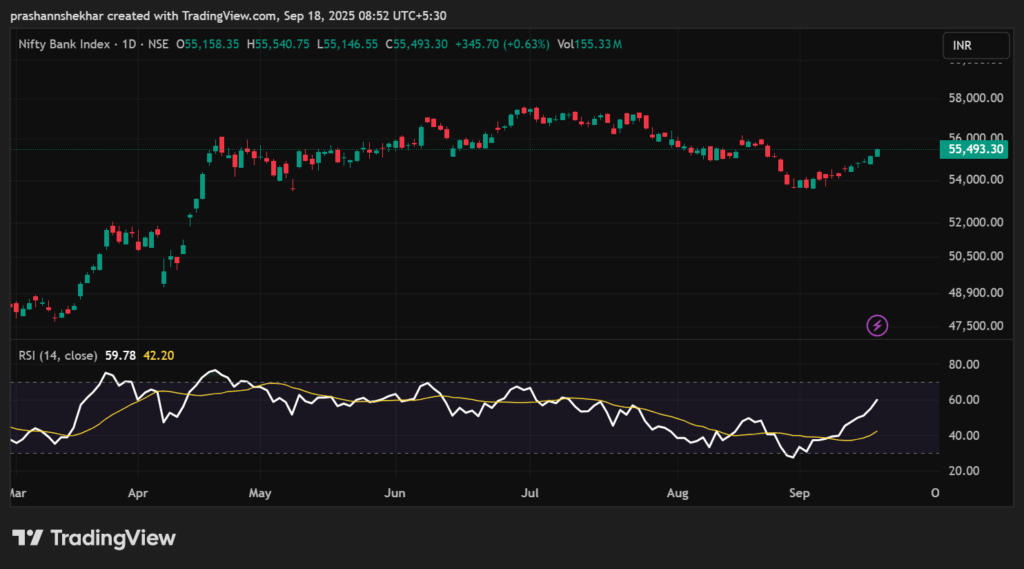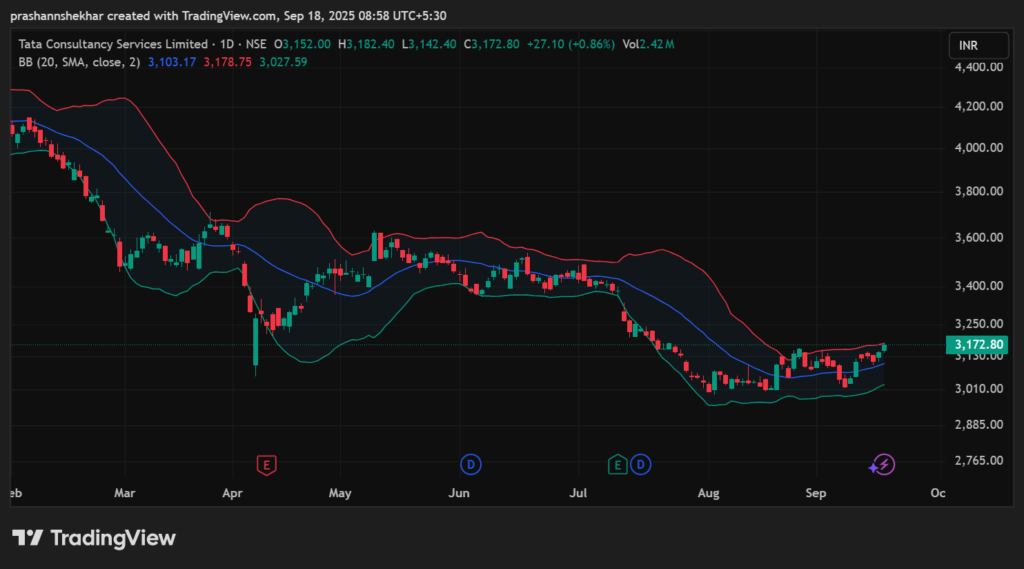📌 Introduction
If there is one technical indicator that almost every trader has on their chart, it is the Moving Average (MA). Simple yet powerful, moving averages help traders smooth price data, identify trends, and filter out market noise. Whether you’re a beginner or an experienced trader, understanding moving averages is a must.
In this blog, we’ll cover everything you need to know about moving averages, their types, and how to use them effectively in intraday and swing trading.
🔹 What is a Moving Average?
A Moving Average is a statistical calculation that takes the average price of a stock (or any asset) over a specific number of periods and keeps updating as new data comes in.
👉 In simple words: It’s a line plotted on your chart that helps you identify the overall direction of the market.
- If the price is above the moving average, the trend is usually bullish.
- If the price is below the moving average, the trend is bearish.
🔹 Types of Moving Averages
1. Simple Moving Average (SMA)
- The most basic form of moving average.
- Calculated by taking the sum of closing prices over a specific period and dividing it by the number of periods.
- Example: A 20-day SMA = (sum of last 20 closing prices) ÷ 20.
- Best used for identifying long-term trends.
2. Exponential Moving Average (EMA)
- Gives more weight to recent prices, making it more responsive to price changes.
- Example: 9 EMA and 21 EMA are popular among intraday traders.
- Best for short-term trading where quick signals are needed.
3. Weighted Moving Average (WMA)
- Similar to EMA, but gives even higher importance to recent prices.
- Less common than EMA and SMA but useful for highly volatile stocks.
🔹 How to Use Moving Averages in Trading
1. Trend Identification
- If the price is consistently above the moving average, it indicates an uptrend.
- If the price is consistently below the moving average, it indicates a downtrend.
👉 Example: Many traders use the 200-day SMA to identify whether a stock is in a long-term bullish or bearish phase.
2. Dynamic Support and Resistance
Moving averages often act as support in an uptrend and resistance in a downtrend.
- Price bouncing off the 50 SMA → bullish signal.
- Price rejecting at 200 EMA → bearish signal.
3. Moving Average Crossovers
Crossovers are among the most popular strategies in trading.
- Golden Cross (Bullish): Short-term MA crosses above long-term MA (e.g., 50 SMA crossing 200 SMA).
- Death Cross (Bearish): Short-term MA crosses below long-term MA.
⚠️ Works best in trending markets, but may give false signals in sideways markets.
4. Intraday Trading with EMA
Intraday traders often prefer EMA because of its sensitivity to price.
Example setup:
- Use the 9 EMA and 21 EMA crossover strategy.
- Buy when 9 EMA crosses above the 21 EMA and price is above VWAP (for confirmation).
- Sell when the 9 EMA crosses below the 21 EMA.
🔹 Advantages of Moving Averages
✅ Easy to use and understand.
✅ Works in all timeframes (intraday, swing, positional).
✅ Helps in identifying major support/resistance levels.
✅ Useful in trend-following systems.
🔹 Limitations of Moving Averages
❌ Lagging indicator – always follows price.
❌ Gives false signals in sideways or choppy markets.
❌ Should not be used as a standalone tool – better when combined with RSI, MACD, or Volume.
🔹 Best Moving Average Settings for Traders
- Intraday Traders: 9 EMA, 21 EMA, 33 EMA.
- Swing Traders: 20 SMA, 50 EMA.
- Positional Traders: 100 SMA, 200 SMA.
💡 Pro Tip: Always backtest different MA settings on your favorite stocks before live trading.
📊 Conclusion
Moving Averages are the backbone of technical analysis. They not only help traders identify trends but also provide reliable support and resistance zones. However, they should never be used in isolation. Combine them with other indicators like RSI, MACD, or Volume for higher accuracy.
📌 Disclaimer: This blog is for educational purposes only. ArthVed 9X is not a SEBI-registered advisor. Please consult your financial advisor before making investment decisions.


